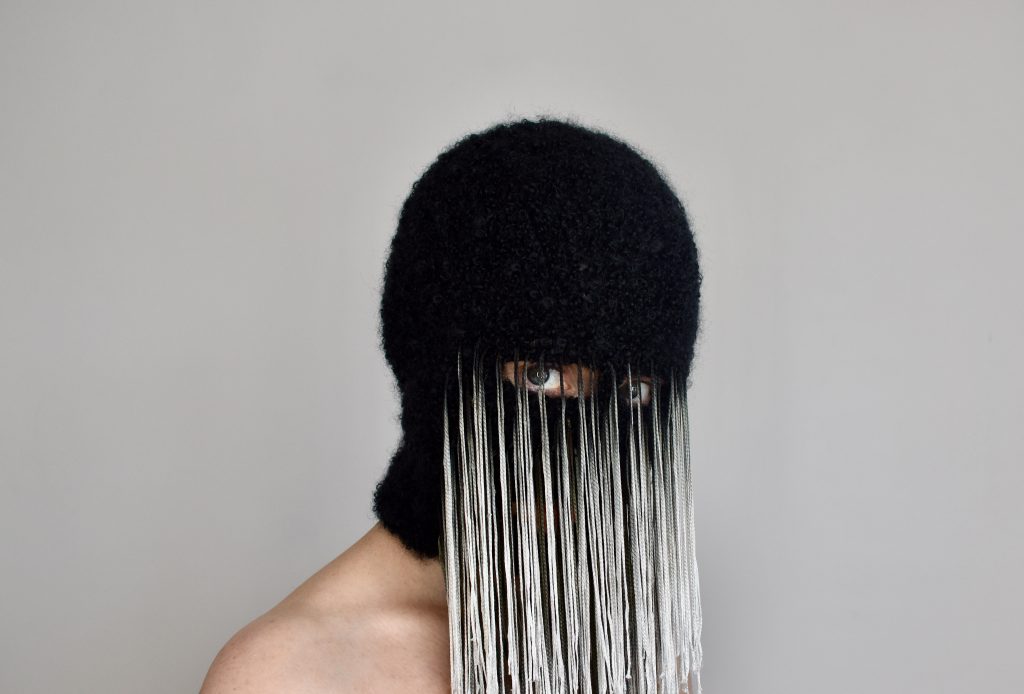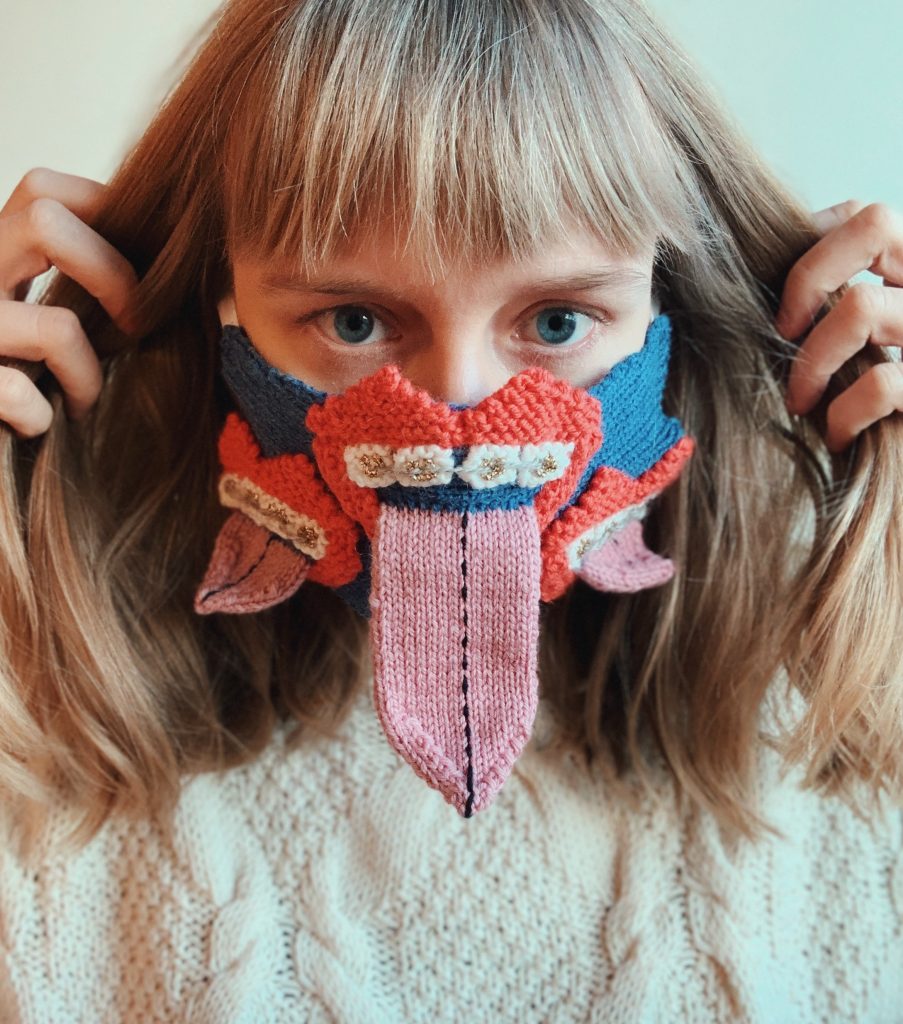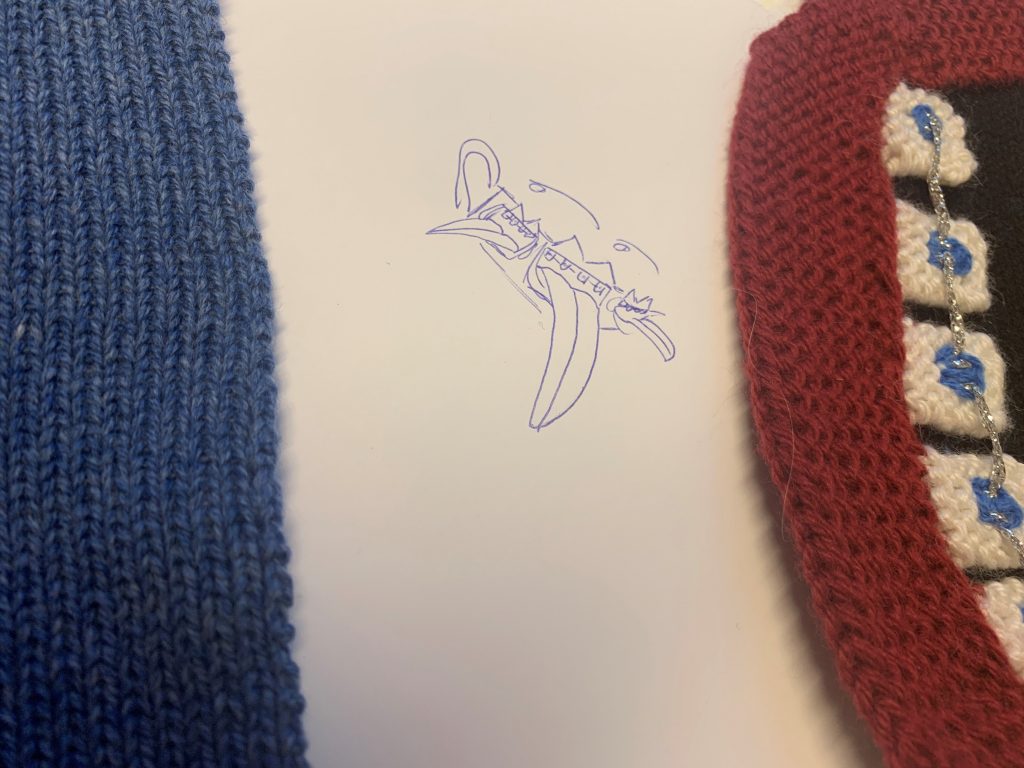Over the last year, we’ve all experienced huge changes in our lives, including the necessary adoption of wearing face coverings in public spaces. Many artists, makers and designers have used these facial adornments as a vehicle to spread messages and discuss the emotional impact of the situation. Curator of Modern & Contemporary Design, Sarah Rothwell, discusses two of her latest acquisitions that show how artists have tackled the emotional impact of the situation through the art of masks.
In March 2020 the initial lockdown was announced and we were all thrown into confusion; the anxiety that was felt by many of us was palpable. The thought that our own breath could now be the carrier for this new deadly pathogen was frightening. But as an asthmatic myself, the very idea that a mask would become part of my daily attire brought back childhood memories of the respirator I had to wear. I recalled how claustrophobic it made me feel and how this anxiety impaired my breathing as a result.
However, my initial trepidation passed. I became fascinated with the history of masks and the contemporary artists, makers and designers whose practice sought to explore them as part of a wider discourse on non-conformative identity, heritage and socio-political discussion.

Masks as performance art
One artist’s Instagram feed I became fascinated with during lockdown, was the Irish visual artist threadstories, who produces art masks utilising traditional craft techniques. threadstories started her ongoing mask project in 2015 as a vehicle in which to question “the erosion of personal privacy in the digital age shaping how we view and portray ourselves online.” Each of her masks starts with a hand-crocheted balaclava base, which she then builds upon using a variety of techniques to produce various malleable and draped additions that obscure and transform her features.
These masks are activated and captured either through photography or film, then shared primarily via her Instagram platform. Each mask serves as a visual representation of how people obscure their true selves online, either intentionally or unintentionally. When discussing her masks, threadstories sees them as “sometimes monstrous, other times farcical façades that poke at the performative nature social media cultivates and celebrates.”
During the lockdown in Ireland, threadstories took solace in the time-consuming nature of her practice to create a series of new works that visually reflected the tension and anxieties that she and others were carrying within us throughout this uncertain time. Breath, created at the start of lockdown, reflects how a natural act became something we feared; something that could harm as well as heal.
“I used the mask as a performative object, I made the invisible, visible. Our breath, our life-force and – in 2020 – the transporter of our most feared opponent, COVID-19.”
threadstories, 2021

Within threadstories’ performance of Breath, we see the silvery tendrils rippling in the air. There’s a certain tension to the act that is resonated as her gaze holds our attention. She is mirroring our discomfort and emotions within this piece, reflecting the anxiety we have felt and endured globally due to the COVID-19 pandemic. An individual’s breath is a subjective act. We say “take a breath” when someone is uneasy; to stop, breathe, and calmness will return. But can our sense of equilibrium return when we still need to confine our breath?
threadstories rarely, if ever, sells her masks outside of commissions. She mainly deconstructs them once they have been captured in performance and shared online, and reuses the materials to make the next. This was a unique opportunity (and an honour for me) to have been able to acquire a powerfully moving artwork that resonates with so many.
A whimsical response to the pandemic
Another artist’s masks that I became entranced with were by the Icelandic artist (and Glasgow School of Art alumna) Ýrúrarí. Her practice is based on marrying traditional craft skills with sustainable production and recycling. She brings new value to secondhand clothing through her hand-knitted quirky, whimsical and colourful creations.
Ýrúrarí’s lockdown facemask project started as a way for her to cope with the isolation she found herself facing. Though mask-wearing was not mandatory within Iceland, Ýrúrarí was influenced by the global requirement and necessity to wear them. Seeing her pieces as “spontaneous objects of art created in strange circumstances. Not as items for protection. But as something to make people smile”.
Ýrúrarí turned her attention to creating art masks in early April 2020, when she began ‘doodling’ by knitting a cheeky add-on for her regular face mask. The idea was to design a monstrous yet humorous form that would encourage people to stay away from the wearer, ensuring social distancing, but to create a sense of comradery in the process.
It took her two days to create her first, comparatively simple, mask. As she went on, her masks became increasingly complex and outlandish. She hoped that her creations would encourage people to wear masks by having fun with them and using them as a form of self-expression. You can’t help but smile at these masks with their exaggerated mouths, often with protruding tongues. With them, Ýrúrarí has created a whimsical and wry take on the silly interactions with others that we are all missing by wearing a mask.

“The reason why I made my masks was a reaction to the quick changes I had to go through, the new global reality and not being able to meet colleagues in person. People needed to release some tension, and laughter can be a good way to do it.”
Ýrúrarí, 2021
Stay away, braces edition is the last mask that Ýrúrarí created in 2020. When we spoke in December she stated that she had an idea at the start of lockdown to create a mask with multiple tongues in braced mouths as if “something is being released and held at the same time”.
There is a subtle tension in the braced mouths that reflects our fears. However, with the comedic scale and lolling appendage, we can’t help but be calmed by its appearance and find comfort and joy within its humour. The whimsy of Ýrúrarí’s work makes us feel more relaxed and embrace the opportunity for exchanges we may have with others whilst wearing them, encouraging communication and laughter once again.

Across these different works, both artists have powerfully encapsulated the emotional rollercoaster that’s been experienced by many due to COVID-19. From the heightened tension seen within threadstories performative mask Breath, created right at the start of March 2020, to our global need to reclaim joy by the time that Ýrúrarí’s Stay Away was constructed in December 2020.
These works of art and craft truly speak of our new identity, and how it feels to be living through this period of global uncertainty.


